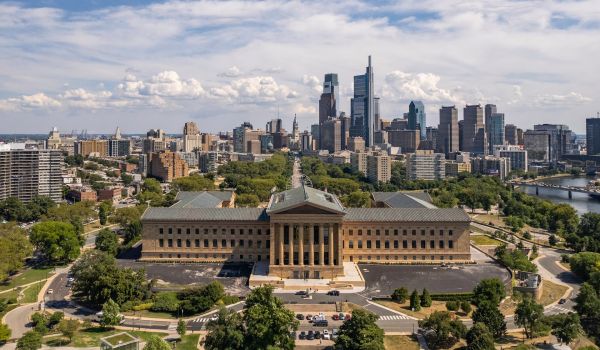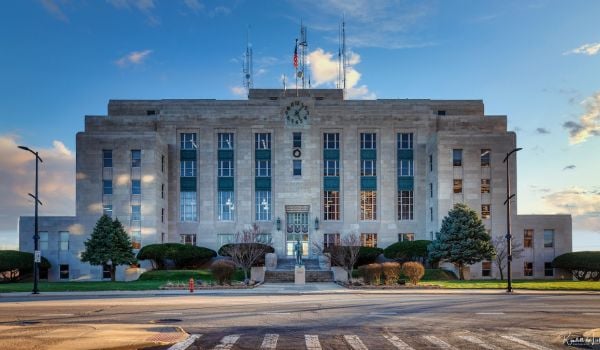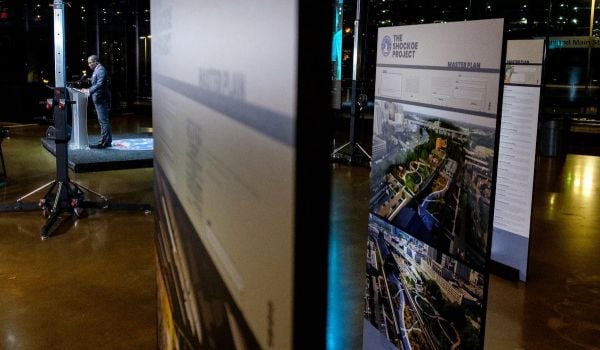Cézanne Charles doesn’t like to talk about herself much. Ask the artist, curator and creative industry executive about her work in Detroit and you learn quite a bit about the art of the people she admires, but very little about her own practice.
While she’s an undeniable leader in the city’s design and development community, the Ohio native commutes to the Motor City from Ann Arbor everyday and she is the first to remind you that her practice is no more important than any local’s.
“Detroit has never need a savior,” Charles says. “I’m very conscious that I have a privilege to work in the city.”
Beyond humility and a keen awareness of her own position as a relative newcomer in Detroit, another factor behind the artist and curator’s reticence may be that her work isn’t all that easy to explain. At her “hybrid” design studio, rootoftwo, she and her partner John Marshall create “social objects,” experiences and works for the public realm. These projects range from internet-of-things-powered “whithervanes” to small buildings and pieces of furniture designed to encourage engagement. When she isn’t masterminding the next frontier of urban interaction, Charles works at Creative Many Michigan, an advocacy organization that supports artists and creative places. There, her job is to help others realize their visions — and in the process, help build Detroit’s thriving artistic community into a more equitable and inclusive one. Through research and running mentorship and fellowship initiatives, she cultivates new talent while supporting the people who have always been there, creating through the city’s good times and the difficult years too.
“Deindustrializing cities already had fundamental assets to be made resilient, and it’s the people who’ve been there,” Charles says. “They have the way to think about policies and systems that a lot of other art and design industries don’t. It’s about responsibility, not just license and permission.”
It’s this mode of thinking that makes Charles such as important figure in one of the city’s most ambitious design projects to date: a multi-year campaign to put Detroit on the map as a UNESCO-designated City of Design known not only for its world-class architecture and industrial design but for the everyday works of art that keep the city humming. From offering support to grassroots organizations to representing Detroit at the sister UNESCO design-designated city of Saint-Étienne, Charles is working to prove that design can drive inclusive growth.
CURATING THE CITY OF DESIGN
Born in a small town outside Dayton Ohio, Charles’ upbringing sparked her interest in public spaces, design and how the two shape the identity of a place. “I grew up in cities that were really having to think about their industrial heritage and legacy,” she says. She went on to earn a bachelor of arts in theater studies from Ohio State University and a master of public administration from the Ford School of Public Policy at University of Michigan in 2015, but it was an experience between her two educations that instilled in her one of her greatest convictions, that “cultural producers and creative agents should think about how to make a city more resilient, more dynamic and also more equitable,” she says. It was the mid-aughts and Charles found herself in Scotland. From 2004 to 2007, she worked as the executive director and CEO of New Media Scotland, an art and technology development organization that provides resources and guidance to people in the creative industries who are in need of funding, networking and professional development, among others.
Charles’ time in the UK also inspired her to work with one of the first groups working on Detroit’s bid to become a UNESCO-designated city. “Scotland was one of those weird places where most of these cities have UNESCO designations in one form or another,” she recalls.
In 2011, she was a participant at Rust Belt to Artist Belt, an annual conference that brought together more than 600 Rust Belt artists and creatives that year. It was then that she became involved with economic development organization Detroit Creative Corridor Center (DC3), which focuses on supporting Detroit’s creative industries. DC3 is the organization that formally submitted the UNESCO bid, with Charles’ help as a member of the advisory board.
“Cezanne is always the one person you can count on to show up and share her opinion,” says Ellie Schneider, DC3’s director of advocacy and operations. Charles currently sits on the Stewardship Board.
In 2015, UNESCO designated Detroit a City of Design, making it the first-ever U.S. city to be recognized in the design field, joining international cities like Budapest and Puebla, Mexico. The designation also welcomes the Motor City into UNESCO’s Creative Cities Network made up of 100-plus places around the world that have been honored for their past and present work of fostering specific creative industries. According to UNESCO, the purpose of the Network is “to foster international cooperation with and between cities committed to investing in creativity as a driver for sustainable urban development, social inclusion and cultural vibrancy.”
“DC3 embarked on two intensive processes to develop values, priorities and strategies related to the designation,” Charles says. “For me the success or accountability with relation to the designation lies not just with one organization or entity, but for the fullness of our community and creative organizations, government and philanthropic sectors, education institutions, private sector companies and firms, and developers and capital to work together to build a just, equitable and resilient city.”
According to Creative Many’s 2016 Creative Industries Report, Michigan’s creative industries employed 88,761 people in 10,706 establishments, and contributed nearly $5 billion in wages to Michigan’s economy. Charles’ experimental curatorial approach becomes clear as she begins to talk about the artists behind those numbers.
For example, she brings up the work of Mitch Cope and Gina Reichert, who have been transforming properties around the Banglatown neighborhood through their nonprofit Power House Productions, since 2009. Creative Many funded Power House as part of their first cohort for the Resonant Detroit program, which provides 35,000 in funding and peer-driven convenings. She is also currently working with Reichart on a toolkit that looks at the way that creative place-based projects in Detroit go through the special events permits, and buildings and inspection permits processes.
It’s simple to see why Charles was attracted to Power House’s work, and vice versa. The organization turned a house into a theater, which is now called Play House, and they also created Sound House, which is an cutting-edge sound studio. Reichart is not interested in “the gift shops, products, and commodities being pedaled as Detroit brand identity or the return of consumerism and capitalism south of 8 Mile” — she’d rather rethink the role of housing and the arts in the neighborhood, as well as “who defines the value of a place.”
“I am interested in the character of the place, the people who understand what this place has to offer besides bottom-line rewards, and how Detroit offers new models for production and alternative systems for thinking, working, and sustaining,” the artist says. Reichart considers Charles to be one of the “strongest advocates for the art and design community” in Detroit, noting that Charles is often working quietly and behind-the-scenes.
As a curator and artist, Charles works with experiences as much as two-dimensional mediums, finding art in the urban fabric of daily life and the spaces in which people engage with one another.
Sister Pie is a bakery in the Detroit’s West Village neighborhood. Designed and built by LAAVU Studio and founding partner Kaija Wuollet, the triple-bottom line business was built according to a design ethos grounded in “building culturally based neighborhoods with strong identities, respect for the past, and innovative ideas for the future,” according to the Laavu Studios website. The space is one of several that has inspired Charles to think differently not only about her own work as a designer and curator, but about Detroit as a place forged by design.
“Architecture studios were behind the success of some of our food businesses,” she says. “Think about the way that they turned these places into real community spaces.”
Another community space that has inspired her work in Detroit is Great Lakes Coffee, a popular spot in the city’s fast-developing Midtown neighborhood.
When Great Lakes opened in 2012, the cafe’s owners decorated the interior walls with reclaimed wood from the city’s abandoned houses, reclaiming the physical manifestations of a real estate market in free fall and finding value.
“Great Lakes made the point that the news was telling us that our houses were not resources and assets, and then disproved that,” Charles says.
With cafes and shops like Great Lakes and Sister Pie so woven into the city’s creative fabric, it shouldn’t have been a surprise when the planning meetings for the 2017 Biennale Internationale Design Saint-Étienne ended up in coffee shops. Creatives started on a tour with a host, who would inevitably bring them to a coffee shop to meet someone; at that coffee shop, they’d unexpectedly end up chatting with other people in the arts community who were there working, Charles recalls. It was organic, and revelatory to the international curators and to Charles.
“It took us seeing this excitement through their eyes that we realized we shouldn’t be taking these shops for granted,” she says. “You go to a coffee shop and get food, coffee, WIFI, bathrooms and most importantly, the permission to stay.”
After spending time in the Motor City at the Detroit Design Festival and coffee shops, Saint-Étienne formally invited DC3 and akaoki, an architecture and design practice founded by Anya Sirota and Jean Louis Farges — and then DC3 invited Charles. For the past few years, Creative Many has spearheaded “Michigan House,” a small home decorated with a curated collection of Michigan-made art and furniture at the annual South by Southwest convention; for four days, the house features Michigan-centric programming, including conversation, entertainment and opportunities to connect with Michigan’s creative scene. After seeing the installation, Olga Stella, the executive director at DC3, decided to bring it to Saint-Étienne. With a $100,000 grant from the Knight Foundation and already-existing grants from the Kresge Foundation and Ford Foundation, Charles took her model abroad and set her sights on creating a place that would encourage conversation and connections. (The Ford Foundation also supports Next City.)
With Sister Pie in mind, Creative Many selected LAAVU as their architecture and design team. The team built a coffee shop that Charles stocked with Detroit classics like Faygo soda pop and Sister Pie’s desserts. In September 2016, Creative Many did a first instantiation of the model at the Detroit Design Summit, and less than a year later, the fully-realized project traveled to Saint-Étienne.
In the shop, named ShiftSpace, visitors could listen to one of the many conversations between artists, architects and educators that Creative Many had planned, or they could strike up a conversation with someone in or outside their field while sharing a snack. Her intention was to explore the interconnectedness of design, economics, politics and technology under the theme Universal Basic. Even the people making espresso and cutting pieces of pie supported Charles’ mission: she created 17 temporary jobs for designers and service industry workers who were compensated for their labor. It was her way of discussing the future of work.
“We had the opportunity to talk about the shift from industrial labor to informal labor practices,” she says. “We could also talk about contractual service-based jobs, which have really filled in, and larger ideas around intellectual processes, wealth and intellectual property. The IP at our space was the recipes from Detroit restaurants.”
One of the people who traveled with Charles as part of a delegation representing Detroit was Bryce Detroit, the co-founder of Detroit Culture Council (DCC), a nonprofit that seeks to increase and support diverse communities’ involvement in design. For Bryce, design in the city cannot be truly inclusive and progressive if the majority black, diasporic African population is not included in the dialogue, as they’ve historically been excluded. While he says there’s been an ongoing conversation happening for the past seven to 10 years about Detroit’s creative world and built environment, it has grown in its fervor since the UNESCO designation.
“Since the bid was acquired by a white-led organization, [DC3], we need to have new conversations, energy and resources dedicated to work that will transform the built environment of a majority black population,” Bryce says. “It becomes necessary and critical that folks who have historically not had access to these locations and this vernacular, to now be brought en masse into these conversations. Awareness leads to access, which leads to the opportunity to directly transform.”
According to DC3, Charles’ unique experience of having worked in curation, project management, and both the grassroots and corporate spheres is what makes her role in the UNESCO designation and design scene in general so integral. For example, Charles explains her support of DCC as part of her overall work to increase equity across the city’s creative landscape. In 2015, Creative Many put funding and human resources behind DCC so they could research how to develop and expand.
“Design has a real role to play in terms of lifting up local agents in the system and supporting their own agency,” she says. “And when you look at neighborhood, there’s some amazing design that’s going under-resourced and undervalued. While we can celebrate the professional and expert, what we need to think about is deploying capital.”
And while Charles would rather promote the work of others, making her less visible to those outside the Detroit design community, those within are not blind to what she’s doing.
“She’s behind the scenes so you don’t know how big of role she plays,” Schneider says. “But what’s incredible is that not only is she able to flow through all these groups, from those at the corporate level to those at the grassroots, but that she somehow figures out how to make time for everyone. I really admire her.”
This article is part of Curating Tomorrow’s Cities, a series exploring trends in urban museum curation and their impact on cities. Curating Tomorrow’s Cities is supported by a grant from the Emily Hall Tremaine Foundation.
Amanda Arnold is the weekend editor and politics contributor at New York Magazine's The Cut.

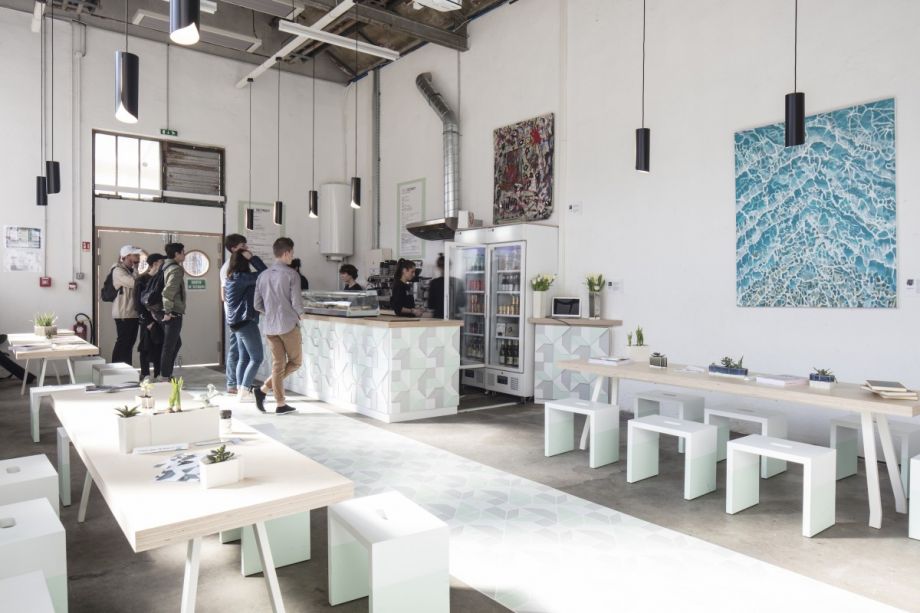
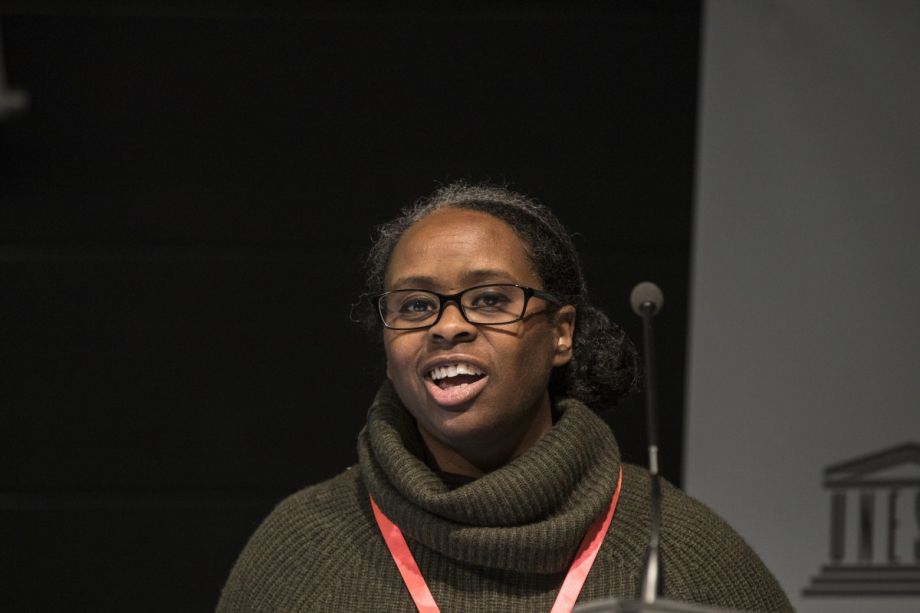
_600_350_80_s_c1.jpg)
